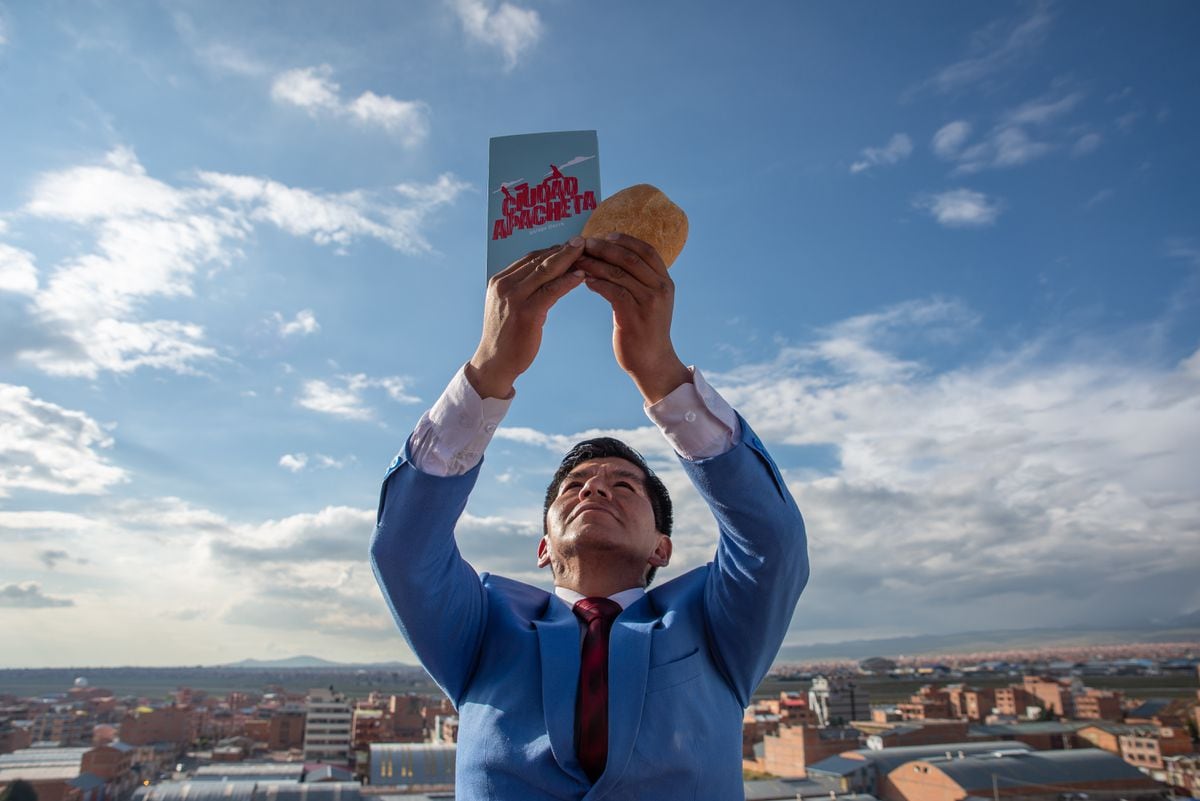The monument of Christopher Columbus without a nose and with his face painted black, this Monday in the center of La Paz (Bolivia) .Martin Alipaz / EFE
A group of protesters painted, mutilated and tried to tear down the statue of Christopher Columbus this Monday in the center of La Paz, the administrative capital of Bolivia.
They were not able to tear it down due to the intervention of the police, who detained five young people in traditional indigenous clothing.
Columbus's face was covered in black paint and he lost his nose.
The attack took place while some musicians, who accompanied the protest, played native wind instruments.
The event occurred on the Day of the Agrarian Revolution, as the old "Indian Day" is now called, which has been celebrated every August 2 since 1937. On this same date, in 1953, the agrarian reform law was promulgated that freed the Indians of the servitude in the haciendas.
To reach the statue, the protesters crossed a barrier of zinc sheets that the mayor's office had erected around it, in anticipation that something like this could happen.
The monument has been many times the target of anti-colonial groups that oppose La Paz honoring the Genoese explorer, whom they consider a genocide.
The latest incident occurred on March 9, when feminist activists painted messages on the pedestal denouncing the high rate of femicides registered in the country.
More information
The Government of Mexico City removes the statue of Columbus two days after the commemoration of his arrival in America
When the statues fall from the pedestal
The ruling Movement to Socialism (MAS) sympathizes with the groups that have insisted on removing monuments considered offensive to the memory of indigenous peoples and other victims of racism, in the context of the Black Lives Matter and popular protests in Colombia, where statues of Spanish conquerors were demolished.
In 2018, Evo Morales, who was the country's president at that time, celebrated the removal of a statue of Columbus from the center of the American city of Los Angeles, according to the Efe agency.
However, the MAS has little force in the administration of the main Bolivian cities, so its ideological sympathy has not been able to translate into the removal and transfer of the statues, as has happened in Bogotá.
Instead, the governments of this party have taken measures to revalue the cultural and religious expressions of indigenous cultures.
At the same time, the social sectors that oppose him have turned the defense of colonial and republican symbols into a mark of identity.
Join EL PAÍS now to follow all the news and read without limits
Subscribe here
After the action of the feminists in March, a group of anti-abortion women erased the graffiti that had been made on the base of the statue, which they considered "insulting". The artistic intervention of another feminist group, who dressed the statue of Isabel la Católica with the clothes of an Indian woman from the Bolivian highlands, generated the protest of an organization called Hispanic Youth. The activists who perched on the figure of Columbus on Monday were booed by some of the passers-by who passed by.
The opposition also criticizes the content of the frieze that adorns the chamber of the Chamber of Deputies in the new building of the Legislative Assembly, built by the ruling party.
It is a portrait of the Andean god Wiracocha, as represented by Tiwanaku, the most important of the pre-Columbian cultures that flourished in the Bolivian highlands.
"We are going to be relentless in the face of these vandalism actions," declared Colonel Hernán Romero, regional police chief.
He explained that his obligation is to defend the national heritage.
Municipal authorities anticipate that they will consult with citizens whether or not to move the monument to another site where it is easier to protect it.
The statue of Columbus is considered one of the most emblematic of La Paz.
It was a gift from the Italian colony in Bolivia and was erected in 1926 on the Prado, which was then the most elegant promenade in the city.
It is the work of the sculptor Giuseppe Graciosa and bears the inscription "Navigare necesse, vivere non est necesse" (Navigating is necessary, living is not necessary), by Plutarco, which alludes to the courage of the formerly called "discoverer" of America.
Subscribe here
to the
EL PAÍS América
newsletter
and receive all the information keys on the region's current affairs









